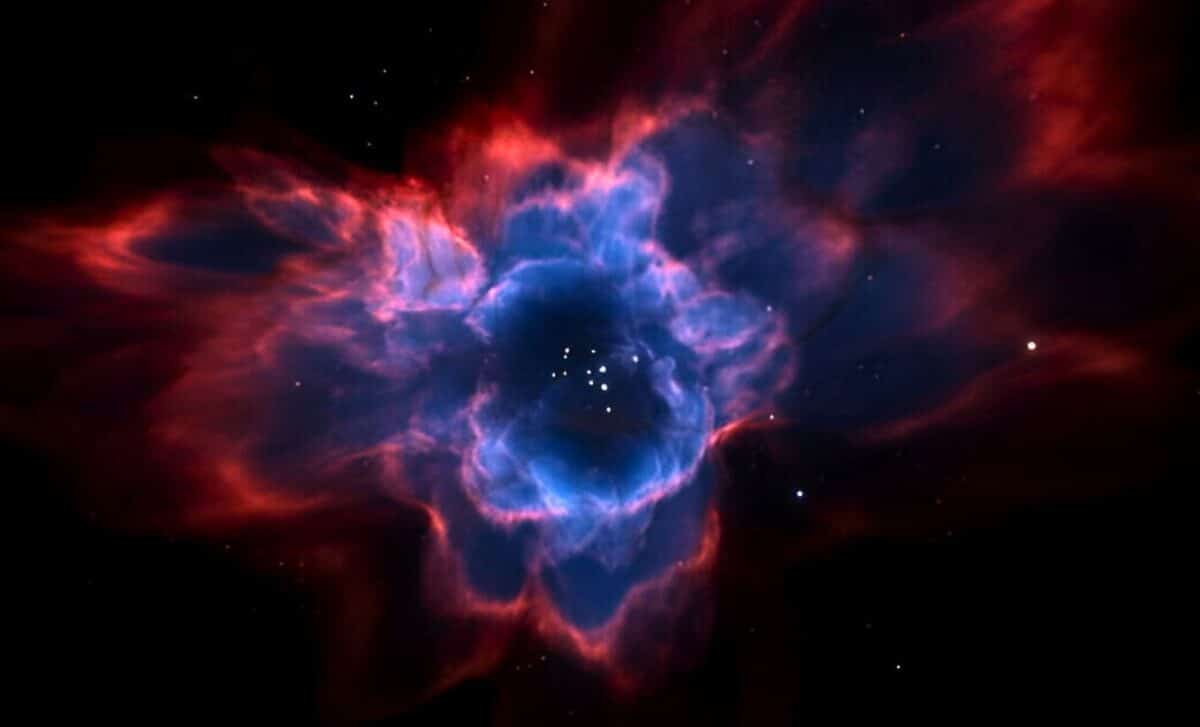
Arezki Amiri Published on December 24, 2024
Collected at: https://dailygalaxy.com/2024/12/dark-energy-doesnt-exist-scientists-reveal-a-lumpy-universe-driving-its-own-expansion/
For decades, the enigmatic concept of dark energy has been central to cosmology, serving as an explanation for the accelerating expansion of the Universe. However, researchers at the University of Canterbury in Christchurch, New Zealand have proposed a revolutionary alternative: dark energy might not exist at all. Using a new approach to analyze supernovae light curves, the team suggests that the Universe’s expansion is not uniform but instead “lumpier” and more varied than previously thought.
A Fundamental Shift in Understanding Cosmic Expansion
Traditional cosmology relies on the Lambda Cold Dark Matter (ΛCDM) model, which requires dark energy to explain observations of distant supernovae and the apparent acceleration of cosmic expansion. Yet this model assumes the Universe expands uniformly, an assumption increasingly questioned by anomalies such as the Hubble tension—a discrepancy between the current and early expansion rates of the Universe.
The researchers propose the timescape model, which eliminates the need for dark energy by accounting for variations in how time and space are calibrated across the cosmos. This model, they argue, shows that “a simple expansion law consistent with Einstein’s general relativity does not have to obey Friedmann’s equation.”

Key Differences: ΛCDM vs. Timescape Model
To clarify how these two models differ in explaining the Universe’s expansion, here’s a quick comparison:
| Feature | ΛCDM Model | Timescape Model |
|---|---|---|
| Role of Dark Energy | Essential to explain accelerated expansion | Not needed; expansion varies by gravitational environment |
| Uniformity of Expansion | Assumes the Universe expands uniformly | Expansion is “lumpier,” depending on cosmic structures |
| Hubble Tension | Explained by evolving or constant dark energy | Addressed as an artifact of time-dilation effects |
The Role of Gravitational Time Dilation
The timescape model introduces a key factor: gravitational time dilation. Clocks in regions of stronger gravity, such as inside galaxies, tick more slowly than those in vast, empty cosmic voids. This difference suggests that the apparent acceleration of the Universe’s expansion is actually the result of these time variations. According to the model, “a clock in the Milky Way would be about 35 percent slower than the same one at an average position in large cosmic voids.”
Implications for the Standard Model and Beyond
Professor David Wiltshire, who led the study, believes their findings could redefine our understanding of the cosmos: “Dark energy is a misidentification of variations in the kinetic energy of expansion, which is not uniform in a Universe as lumpy as the one we actually live in.” This approach also provides a potential resolution to long-standing puzzles such as the Hubble tension, an anomaly that challenges the ΛCDM model.
Moreover, evidence from the Dark Energy Spectroscopic Instrument (DESI) and other high-precision datasets has shown that alternative models may better fit observed data than the ΛCDM framework. These insights suggest that the assumptions of uniform cosmic expansion, grounded in the Friedmann equation, might need to be revised.
Testing the Timescape Model with Future Missions
The timescape model has gained traction due to improved data, including the Pantheon+ catalogue of 1,535 supernovae. This catalogue provided robust evidence supporting the model, but future tests are necessary to solidify its place in cosmology. The European Space Agency’s Euclid satellite and the Nancy Grace Roman Space Telescope are expected to deliver crucial new insights.
Next Steps in Cosmic Exploration
With at least 1,000 high-quality supernovae observations needed to distinguish the timescape model from the ΛCDM framework, the scientific community anticipates a data-driven resolution to the dark energy debate. As Professor Wiltshire noted, “With new data, the Universe’s biggest mystery could be settled by the end of the decade.”
This ongoing research not only challenges our current understanding of the cosmos but also promises to reshape the foundations of modern cosmology in the years to come.
Source: Royal Astronomical Society

Leave a Reply